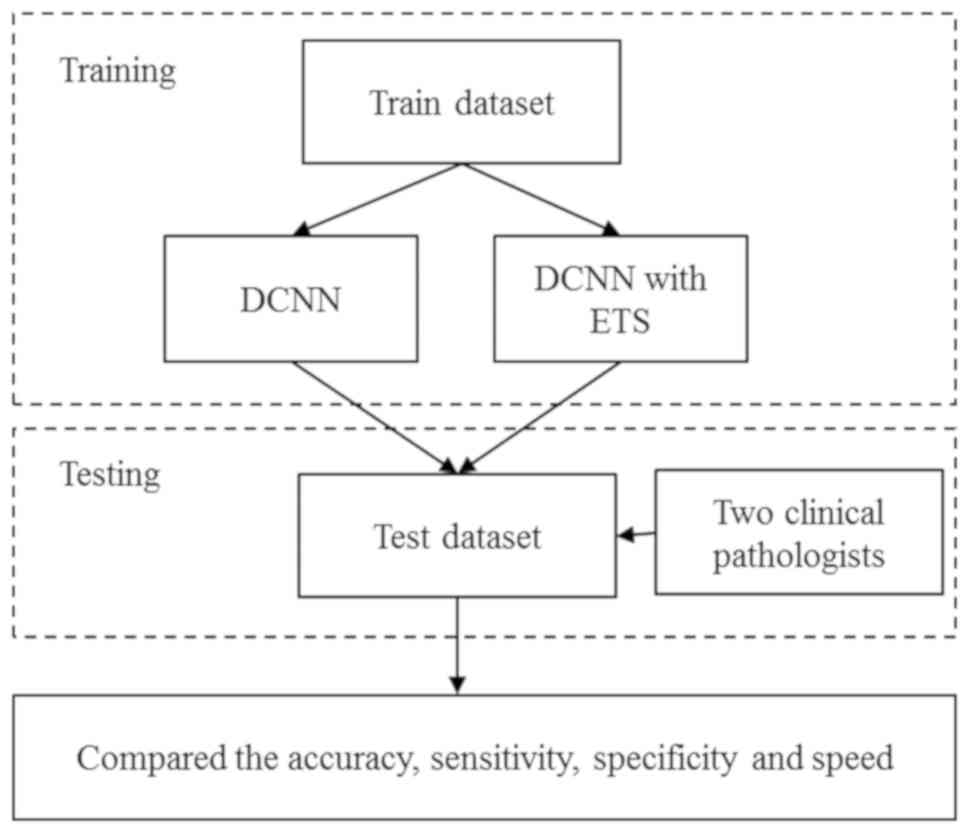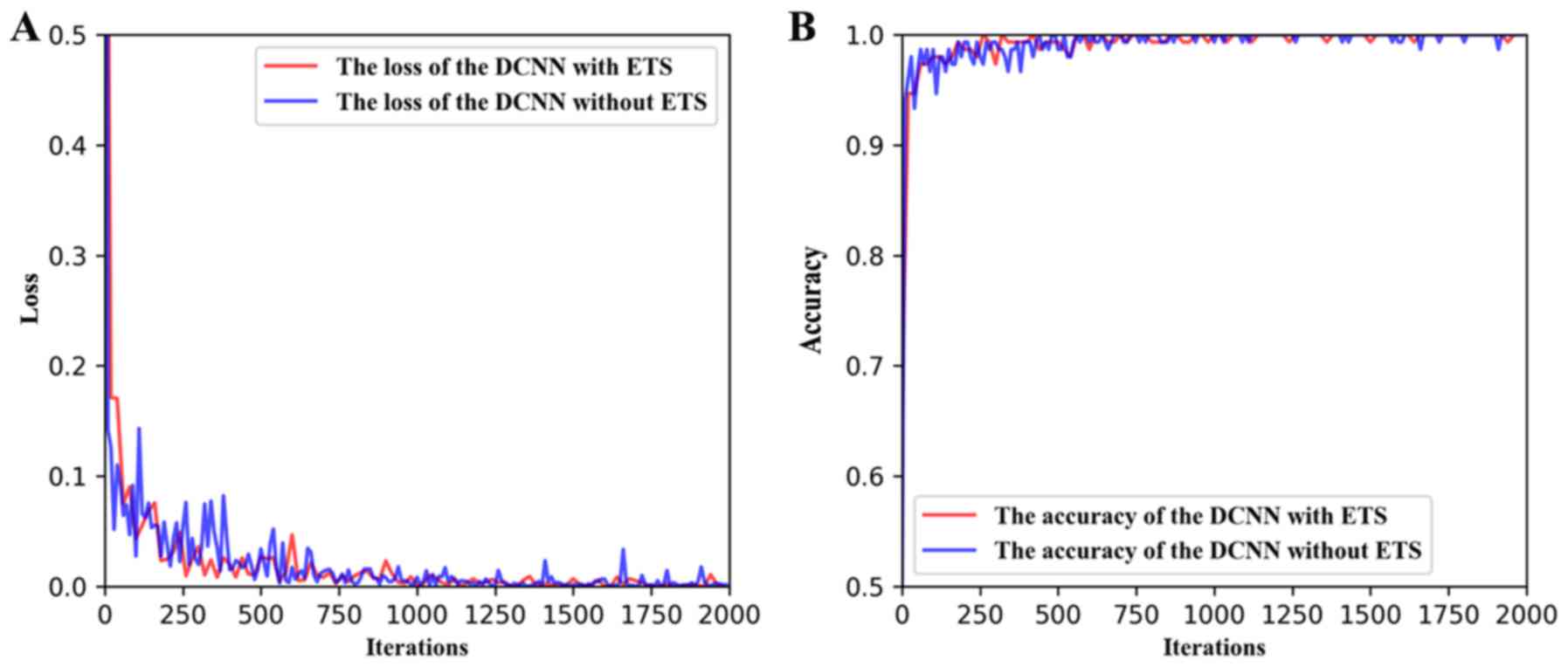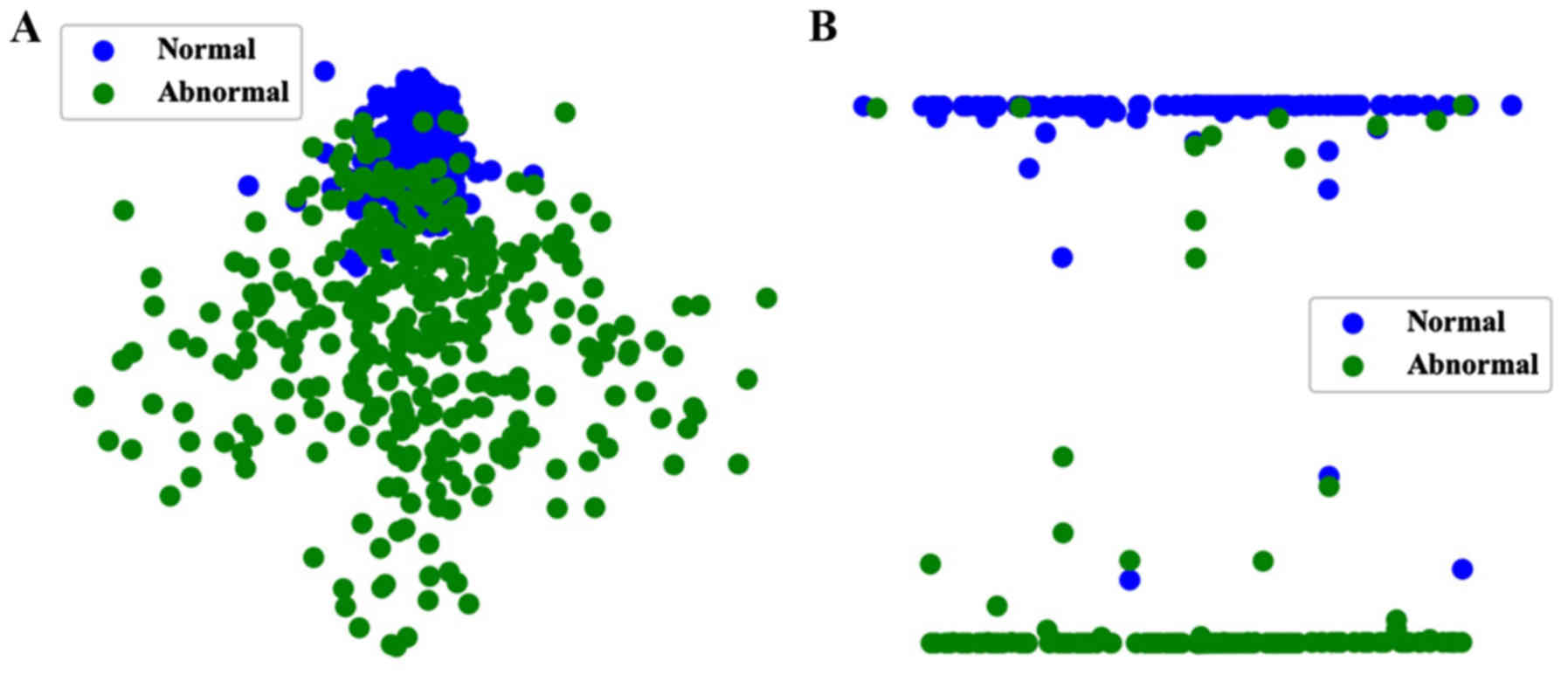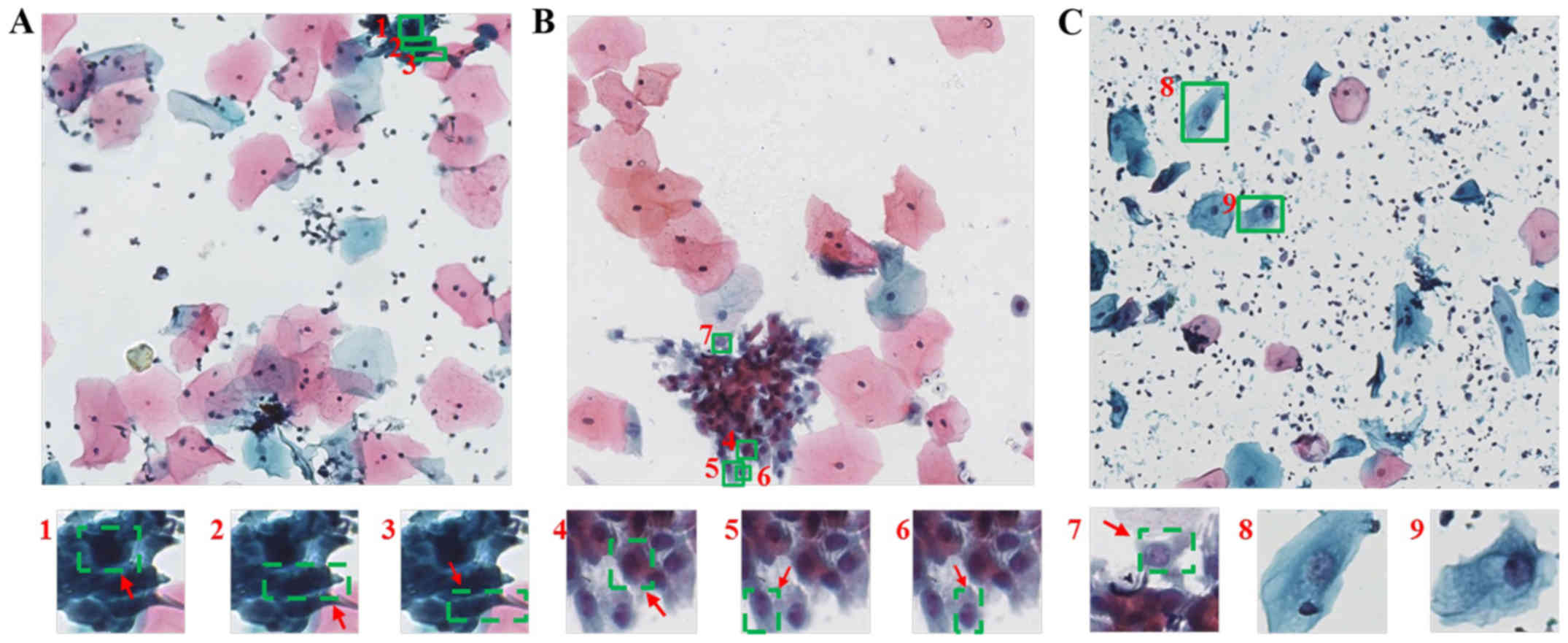|
1
|
Small W Jr, Bacon MA, Bajaj A, Chuang LT,
Fisher BJ, Harkenrider MM, Jhingran A, Kitchener HC, Mileshkin LR,
Viswanathan AN and Gaffney DK: Cervical cancer: A global health
crisis. Cancer. 123:2404–2412. 2017. View Article : Google Scholar : PubMed/NCBI
|
|
2
|
Bray F, Ferlay J, Soerjomataram I, Siegel
RL, Torre LA and Jemal A: Global cancer statistics 2018: GLOBOCAN
estimates of incidence and mortality worldwide for 36 cancers in
185 countries. CA Cancer J Clin. 68:394–424. 2018. View Article : Google Scholar : PubMed/NCBI
|
|
3
|
Globocan, . 2018.China factsheet.
July
18–2020
|
|
4
|
Cheng WQ, Zheng QS, Zhang SW, Zeng HM, Zuo
TT, Jia MM, Xia CF, Zhou XN and He J: Analysis of incidence and
death of malignant tumors in China in 2012. China Cancer. 25:1–8.
2016.
|
|
5
|
Chacho MS, Mattie ME and Schwartz PE:
Cytohistologic correlation rates between conventional Papanicolaou
smears and ThinPrep cervical cytology: A comparison. Cancer.
99:135–140. 2003. View Article : Google Scholar : PubMed/NCBI
|
|
6
|
Behtash N and Mehrdad N: Cervical cancer:
screening and prevention. Asian Pac J Cancer Prev. 7:683–686.
2006.PubMed/NCBI
|
|
7
|
Ritu N and Wilbur D: The Bethesda System
for reporting cervical cytology: Definitions, criteria, and
explanatory notes. Springer International Publishing; Berlin: 2015,
PubMed/NCBI
|
|
8
|
Xie Y, Zhang J, Xia Y and Shen C: A mutual
bootstrapping model for automated skin lesion segmentation and
classification. IEEE Trans Med Imaging. 39:2482–2493. 2020.
View Article : Google Scholar : PubMed/NCBI
|
|
9
|
Gehlot S, Gupta A and Gupta R:
SDCT-AuxNet°: DCT augmented stain deconvolutional CNN with
auxiliary classifier for cancer diagnosis. Med Image Anal.
61:1016612020. View Article : Google Scholar : PubMed/NCBI
|
|
10
|
Murugan A, Nair SAH and Kumar KPS:
Detection of skin cancer using SVM, random forest and kNN
classifiers. J Med Syst. 43:2692019. View Article : Google Scholar : PubMed/NCBI
|
|
11
|
Abdulkerim C, Abdülkadir A, Aslı Ü,
Nurullah Ç, Gökhan B, Ilknur T, Aslı Ç, Behçet UT and Lütfiye DA:
Segmentation of precursor lesions in cervical cancer using
convolutional neural networks. 25th Signal Processing
and Communications Applications Conference (SIU). 2017.
|
|
12
|
Chankong T, Theera-Umpon N and
Auephanwiriyakul S: Automatic cervical cell segmentation and
classification in Pap smears. Comput Methods Programs Biomed.
113:539–556. 2014. View Article : Google Scholar : PubMed/NCBI
|
|
13
|
Zhang L, Lu L, Nogues I, Summers RM, Liu S
and Yao J: DeepPap: Deep convolutional networks for cervical cell
classification. IEEE J Biomed Health Inform. 21:1633–1643. 2017.
View Article : Google Scholar : PubMed/NCBI
|
|
14
|
Wu M, Yan C, Liu H, Liu Q and Yin Y:
Automatic classification of cervical cancer from cytological images
by using convolutional neural network. Biosci Rep.
38:BSR201817692018. View Article : Google Scholar : PubMed/NCBI
|
|
15
|
Tian Y, Yang L, Wang W, Zhang J, Tang Q,
Ji M, Yu Y, Li Y, Yang H and Qian A: Computer-aided detection of
squamous carcinoma of the cervix in whole slide images. arXiv
1905.10959. 2019.
|
|
16
|
Liu L, Wang Y, Wu D, Zhai Y, Tan L and
Xiao J: Multi-task learning for pathomorphology recognition of
squamous intraepithelial lesion in Thinprep cytologic test. ISICDM.
10:73–77. 2018.
|
|
17
|
Miyagi Y, Takehara K, Nagayasu Y and
Miyake T: Application of deep learning to the classification of
uterine cervical squamous epithelial lesion from colposcopy images
combined with HPV types. Oncol Lett. 19:1602–1610. 2020.PubMed/NCBI
|
|
18
|
Weiss S, Xu ZZ, Shyamal P, Amir A,
Bittinger K, Gonzalez A, Lozupone C, Zaneveld JR, Vázquez-Baeza Y,
Birmingham A, et al: Normalization and microbial differential
abundance strategies depend upon data characteristics. Microbiome.
5:272017. View Article : Google Scholar : PubMed/NCBI
|
|
19
|
Simonyan K and Zisserman A: Very deep
convolutional networks for large-scale image recognition. arXiv:
1409.1556. 2014.
|
|
20
|
Saikia AR, Bora K, Mahanta LB and Das AK:
Comparative assessment of CNN architectures for classification of
breast FNAC images. Tissue Cell. 57:8–14. 2019. View Article : Google Scholar : PubMed/NCBI
|
|
21
|
Sharma S and Mehra R: Conventional machine
learning and deep learning approach for multi-classification of
breast cancer histopathology images-a comparative insight. J Digit
Imaging. 33:632–654. 2020. View Article : Google Scholar : PubMed/NCBI
|
|
22
|
Pan SJ and Yang Q: A survey on transfer
learning. IEEE Trans Knowledge Data Eng. 10:1345–1359. 2010.
View Article : Google Scholar
|
|
23
|
Deng J, Dong W, Socher R, Li LJ, Li K and
Li FF: ImageNet: A large-scale hierarchical image database. IEEE
Conference on Computer Vision and Pattern Recognition. 248–255.
2009.
|
|
24
|
Takase T, Oyama S and Kurihara M:
Effective neural network training with adaptive learning rate based
on training loss. Neural Netw. 101:68–78. 2018. View Article : Google Scholar : PubMed/NCBI
|
|
25
|
Mo Z, Wang Q, Tian S, Yan R, Geng J, Yao Z
and Lu Q: Evaluating treatment via flexibility of dynamic MRI
community structures in depression. J Southeast Univ. 33:273–276.
2017.
|
|
26
|
Hyvärinen A and Oja E: Independent
component analysis: Algorithms and applications. Neural Netw.
13:411–430. 2000. View Article : Google Scholar : PubMed/NCBI
|
|
27
|
Taqi AM, Awad A, Al-Azzo F and Milanova M:
The impact of multi-optimizers and data augmentation on TensorFlow
convolutional neural network performance. IEEE Conference on
Multimedia Information Processing Retrieval. 140–145. 2018.
|




















